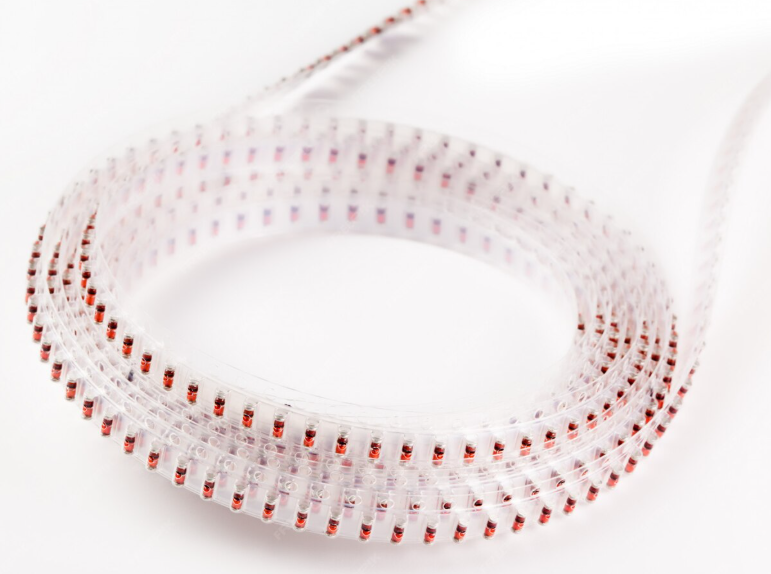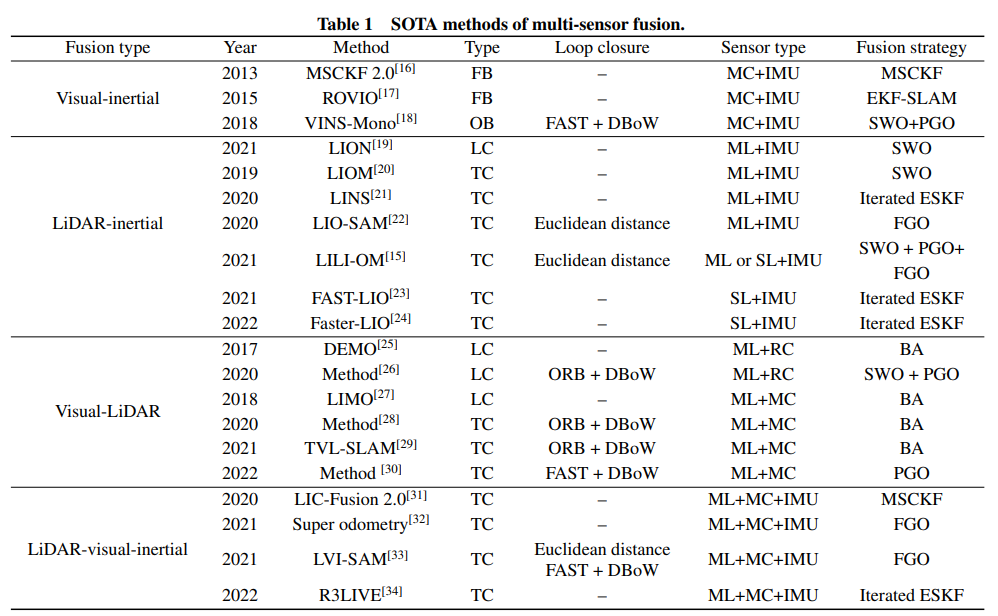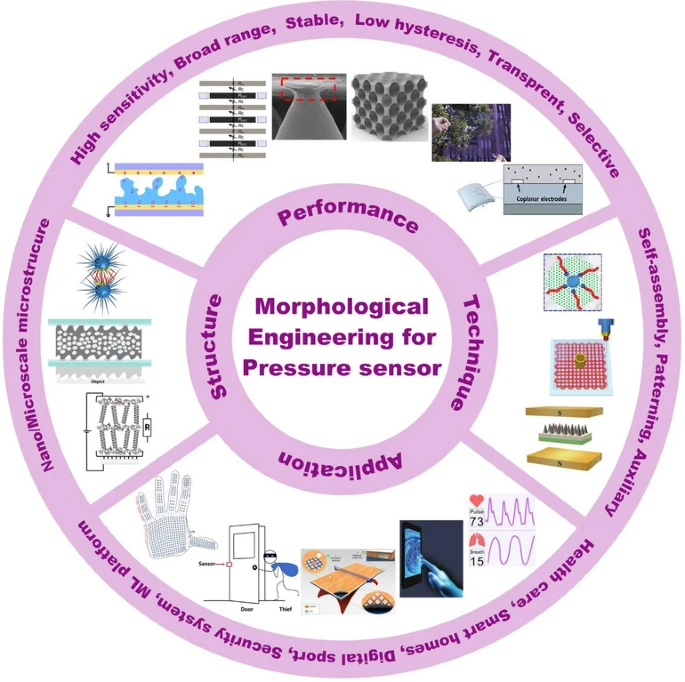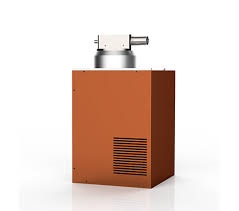Overview

Many modern intelligent detection systems extensively use various sensors, with applications spanning industrial production, marine exploration, environmental protection, medical diagnostics, bioengineering, space development, and smart homes. As application demands in the information era increase, expectations for measurable ranges, accuracy, and stability of sensors have risen. Measuring gases, pressure, and humidity under special environments and signals poses new challenges for conventional sensors.
To address diverse signals and environments, sensor technology is evolving along several directions: development of new materials and processes; creation of new sensor types; integration and intelligence of sensors; miniaturization of sensing hardware and components; and cross-disciplinary integration. Additionally, sensors are expected to be transparent, flexible, stretchable, foldable, portable, and wearable. With advances in flexible substrate materials, flexible sensors that meet these requirements have emerged.
Features of Flexible Sensors
Flexible materials contrast with rigid materials and generally exhibit softness, low modulus, and easy deformability. Common flexible materials include polyvinyl alcohol (PVA), polyester (PET), polyimide (PI), polyethylene naphthalate (PEN), paper, and textile materials.
Flexible sensors are sensors fabricated using flexible materials. They offer good flexibility, stretchability, and the ability to bend or fold freely. Their structural forms are versatile and can be arranged to meet measurement requirements, allowing convenient detection of complex targets. Flexible sensors have been applied in electronic skin, healthcare, electronics, electrical engineering, sports equipment, textiles, aerospace, and environmental monitoring.
Classification of Flexible Sensors
Flexible sensors can be classified in multiple ways.
By application: pressure sensors, gas sensors, humidity sensors, temperature sensors, strain sensors, magnetoresistive sensors, and thermal flow sensors.
By sensing mechanism: resistive sensors, capacitive sensors, piezomagnetic sensors, and inductive sensors.
Common Materials for Flexible Sensors
1. Flexible Substrates
Key properties for flexible substrates include thinness, transparency, flexibility, good stretchability, insulation, and corrosion resistance.
Polydimethylsiloxane (PDMS) is widely used due to its availability, chemical stability, transparency, and thermal stability. Its distinct adhesive and non-adhesive regions under ultraviolet light make it easy to bond electronic materials to its surface. Many flexible electronics obtain bendability by reducing substrate thickness, but this approach is limited to nearly flat surfaces. Stretchable electronics can conform to complex and uneven surfaces. Two strategies are typically used to achieve stretchability in wearable sensors: directly bonding low Young's modulus conductive films to a flexible substrate, or using intrinsically stretchable conductors by dispersing conductive materials into an elastic matrix.
2. Metal Materials
Metals such as gold, silver, and copper are used for electrodes and wires. For modern printing processes, conductive inks based on nanoparticles or nanowires are common. Metal nanoparticles offer good conductivity and can be sintered into films or conductors.
3. Inorganic Semiconductor Materials
Inorganic semiconductors represented by ZnO and ZnS show strong piezoelectric properties and have promising applications in wearable flexible electronic sensors.
A flexible pressure sensor based on the direct conversion of mechanical energy into optical signals has been developed using the mechanoluminescent properties of ZnS:Mn particles. Mechanoluminescence in this case is driven by piezoelectric effects: pressure induces an internal electric field in piezoelectric ZnS, which tilts the electronic bands and facilitates excitation of Mn2+; subsequent relaxation emits yellow light centered around 580 nm.
Such sensors can achieve fast response times (less than 10 ms) and, via top-down lithography, spatial resolutions down to 100 μm. They can record dynamic pressure from single-point sliding, discriminate signature strokes, and map two-dimensional pressure distributions by recording emitted intensity curves, making inorganic semiconductors strong candidates for fast-response, high-resolution pressure sensing.
4. Organic Materials
Large-scale pressure sensor arrays are important for wearable sensors. Resistive and capacitive pressure sensors suffer from signal crosstalk, which degrades measurement accuracy and is a key challenge for wearable systems.
Transistors provide signal transduction and amplification, helping reduce crosstalk. Therefore, much research on wearable sensors and artificial intelligence focuses on scalable flexible pressure-sensitive transistors.
Typical field-effect transistors (FETs) consist of source, drain, gate, dielectric layer, and semiconductor layer. Based on the dominant carriers, FETs are classified as p-type (holes) or n-type (electrons).
P-type polymer semiconductors used in FET research are often thiophene-based polymers; a successful example is poly(3-hexylthiophene) (P3HT). Naphthalene diimide (NDI) and perylene diimide (PDI) materials show good n-type performance and are widely used in small-molecule n-type FETs.
Common transistor parameters include carrier mobility, operating voltage, and on/off current ratio. Compared with inorganic semiconductors, organic FETs (OFETs) have advantages in flexibility and low fabrication cost, but typically suffer from lower carrier mobility and higher operating voltages.
5. Carbon Materials
Common carbon materials for flexible wearable sensors include carbon nanotubes and graphene. Carbon nanotubes offer high crystallinity, good conductivity, large specific surface area, and controllable micropore sizes through synthesis, enabling high utilization of surface area.
Graphene is thin, transparent, and has excellent electrical and thermal conductivity, with broad potential in sensing, mobile communications, information technology, and electric vehicles.
Using multibranched carbon nanotubes composited with silver and printed into conductive polymer sensors, conductivities of up to 20 S/cm have been reported under 140% strain.
Combining carbon nanotubes and graphene, highly stretchable transparent field-effect transistors have been fabricated that use graphene/single-walled carbon nanotube electrodes and a wrinkled inorganic dielectric with a single-walled carbon nanotube network channel. With a wrinkled aluminum oxide dielectric, no change in drain current was observed over more than 1,000 cycles of 20% stretch-release, demonstrating good durability.
Common Flexible Sensor Types
1. Flexible Gas Sensors
Flexible gas sensors employ gas-sensitive thin films on flexible substrates, offering light weight, bendability, and suitability for large-area fabrication. Thin-film sensing materials can provide high sensitivity and relatively simple fabrication. These characteristics meet requirements for portability and low power consumption in special-environment gas sensing, addressing limitations of traditional gas sensors such as poor portability, limited measurement range, small dynamic range, and high cost. Flexible gas sensors enable simple and accurate detection of gases like NH3, NO, and ethanol.
2. Flexible Pressure Sensors
Flexible pressure sensors are widely used in smart garments, sports monitoring, and robotic “skin.” Substrate materials such as polyvinylidene fluoride (PVDF), silicone rubber, and polyimide are commonly used. Unlike load cells based on metal strain gauges or diffusion-type pressure sensors with n-type semiconductor chips, flexible pressure sensors offer improved flexibility, conductivity, and piezoresistive behavior.
3. Flexible Humidity Sensors
Humidity sensors are mainly resistive and capacitive types. Humidity-sensitive resistors have a humidity-sensitive film on a substrate; adsorption of water vapor changes the resistivity and resistance, enabling humidity measurement. Humidity-sensitive capacitors are usually made from polymer films; common polymers include polystyrene, polyimide, and cellulose acetate.
Humidity sensors are rapidly evolving from simple humidity elements toward integrated, intelligent, and multi-parameter detection. Flexible humidity sensors, valued for low cost, low power consumption, ease of fabrication, and easy integration into smart systems, are widely studied. Substrates and fabrication methods (dip coating, spin coating, screen printing, inkjet printing) are similar to those for other flexible sensors.
Challenges and Outlook
Flexible sensors offer versatile structures and convenient deployment for precise, rapid measurement in special environments and for special signals, addressing miniaturization, integration, and intelligence requirements. They play important roles in electronic skin, biomedicine, wearable electronics, and aerospace. However, materials processing for carbon nanotubes and graphene is still immature, and issues remain with cost, applicability, and lifetime. Common flexible substrates can be temperature-sensitive, causing large interfacial stress and weak adhesion between substrate and thin films. Assembly, alignment, integration, and encapsulation technologies for flexible sensors also require further development.
 ALLPCB
ALLPCB






